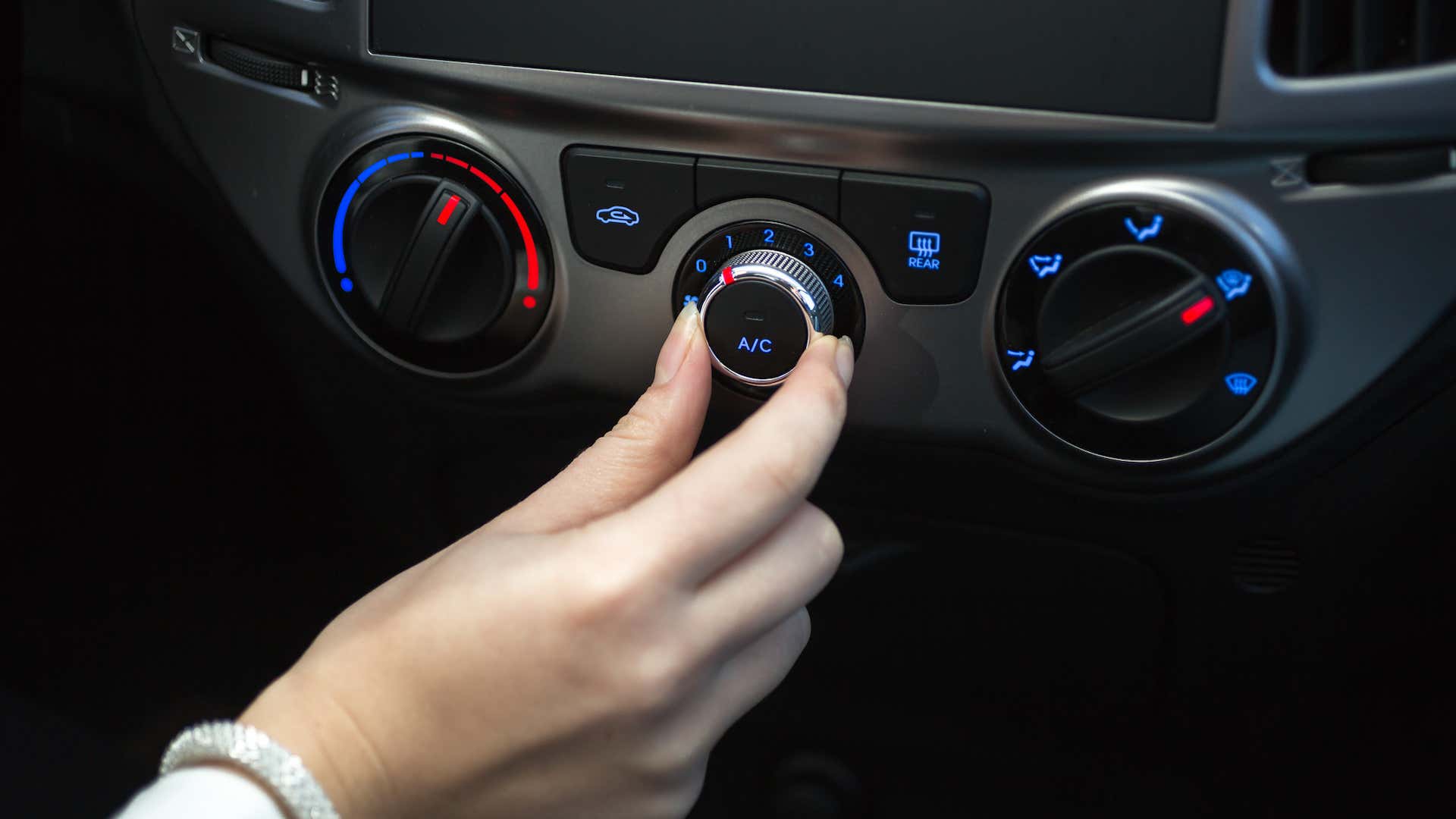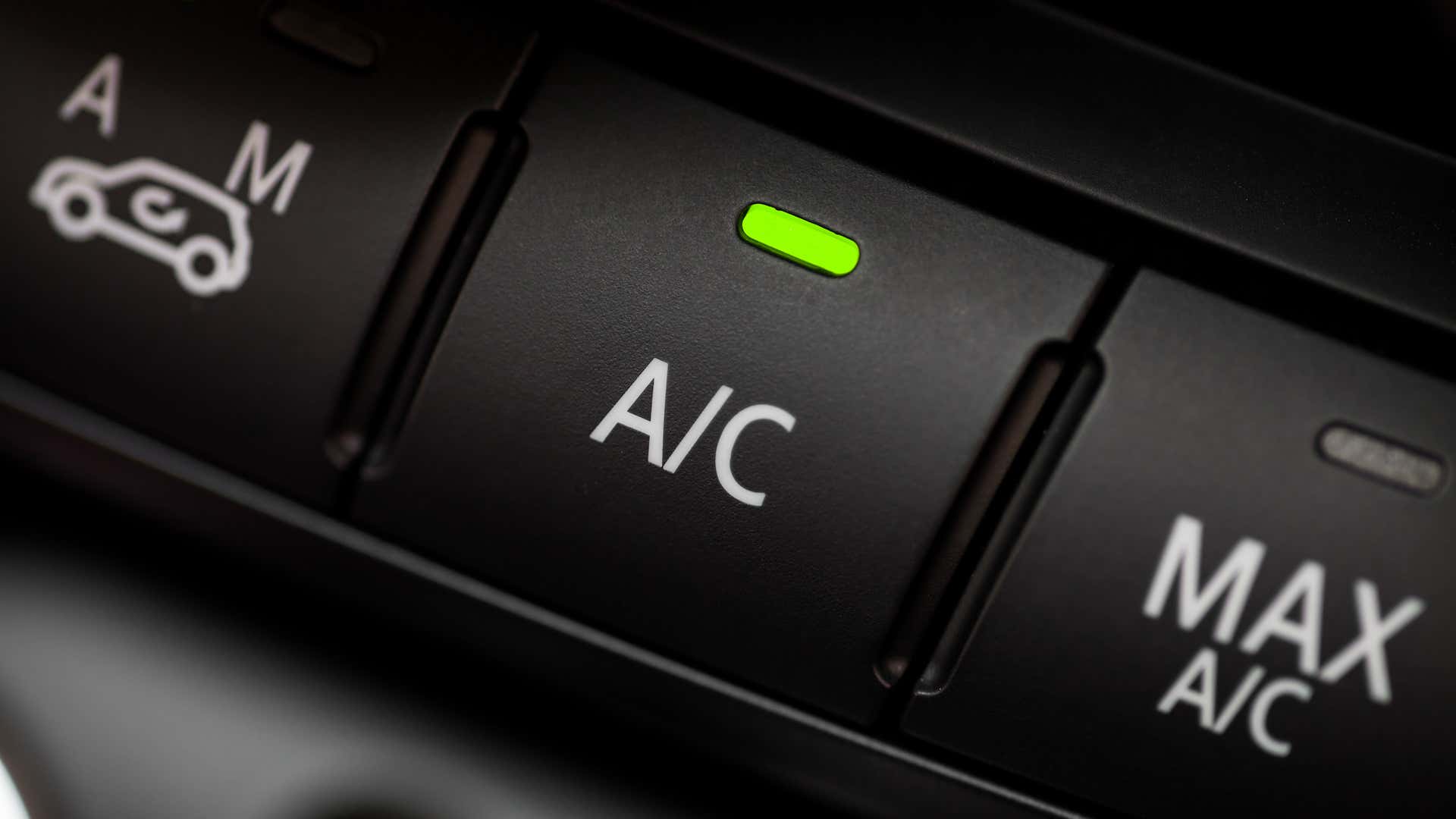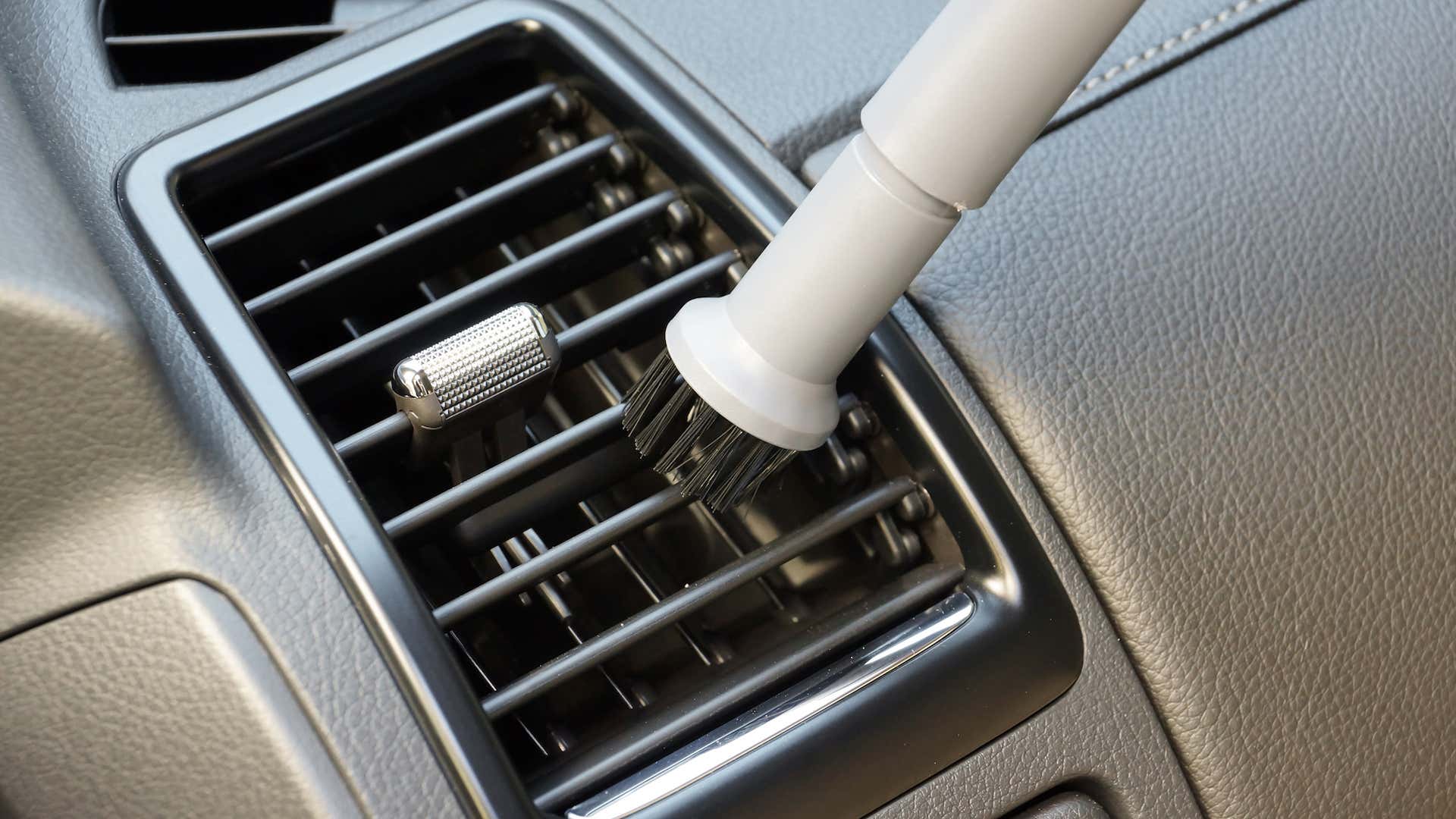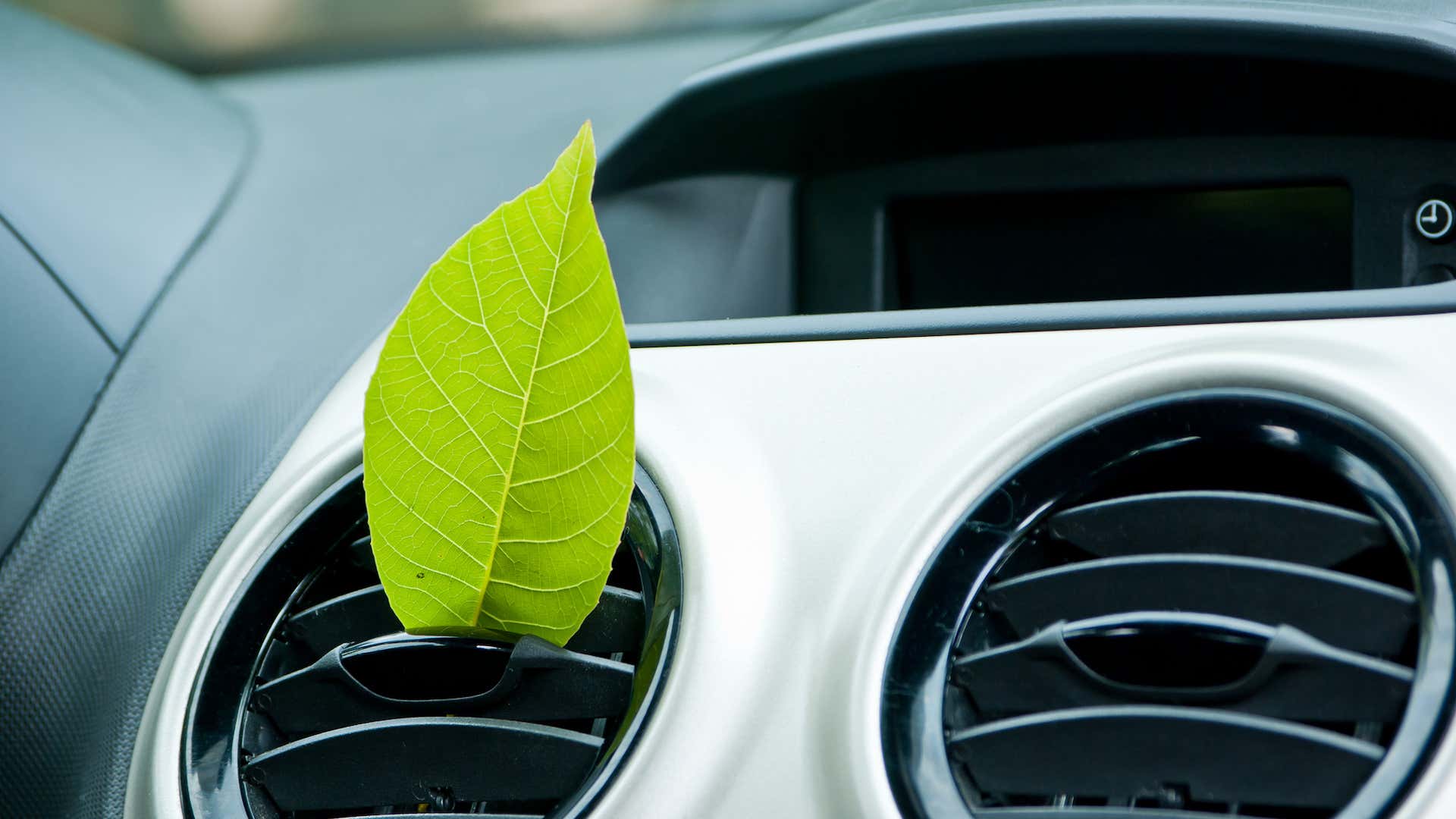The Drive and its partners may earn a commission if you purchase a product through one of our links. Read more.
Repairing a car’s air conditioning system ranks high on the list of things that nobody wants to do, but it’s not all that bad if you know what you’re getting into. Once things start heating up in your car, the biggest challenge you’ll have in fixing the problem is determining what the actual issue is.
Diagnosing air conditioning issues can be difficult.
Hot air or no air leaving your car’s vents when you flip the switch can be caused by a number of factors, some of which will require the help of a professional to fix. You can remedy some of the simpler issues at home by recharging the system with refrigerant or replacing damaged hoses, but you need to know the limits of your skills to avoid causing more damage in the process. This will ensure that your vehicle’s air conditioning system works properly, cools you down, and runs smoothly for years to come.
So follow along with The Drive’s guide to car A/C repair and learn the language of your compressor.
Let’s get started!
Car A/C Repair Basics
Estimated Time Needed: Anywhere from an hour to several hours, depending on the problem and how complex the A/C system.
Skill Level: Intermediate
Vehicle System: HVAC
Sometimes, there’s just no cold air.
Common Car A/C Repair Problems
Before you can make a repair, you’ll need to find out which part of the air conditioning system isn’t working properly. Let’s start checking things off our list.
- Are the fans running and pushing out air?
- If the fans are working, is the air temperature cool or warm?
- Under the hood, check the A/C compressor to ensure that it’s running. There should be a pulley and belt that turns when the system is running.
If it’s not, the compressor may require replacement.
- Unplug the wires that are connected to the compressor’s electric clutch.
- Test the compressor by running a wire from the compressor’s wire to the battery’s positive terminal. You should hear a loud cracking sound.
If there is no sound, the clutch is malfunctioning and the compressor will need to be replaced.
- It’s a good idea to use a leak detection kit here. They use a dye that can be seen with the naked eye and can help quickly identify where leaks originate.
- Unless you’re a highly-skilled automotive technician, you’ll need to have a pro fix the leaks.
If there are no leaks, the issue could be related to low coolant levels, the easiest and most common air conditioning issue.
Keeping vents clean helps, too.
Car A/C Repair Safety
You’re dealing with a pressurized system and will be using a pressurized canister full of potentially harmful chemicals. Here are The Drive’s top tips for keeping your eyes and skin spotless and undamaged.
- Wear gloves and safety glasses.
- Even newer coolants can be harmful to the environment, so don’t expect to dispose of them carelessly. We’re watching you.
- Leftover chemicals should be stored away from open flames, direct sunlight, and hot temperatures.
- Work in a well-ventilated area. Breathing chemical fumes from the air conditioning repair is bad news, so use a mask.
- Don’t overfill your vehicle’s refrigerant tank. It can rupture or explode, causing injury or damage to other parts of the vehicle.
Everything You’ll Need To Repair A Car’s A/C
You won’t need much to get started with an A/C repair, but there are a few things that are absolutely required:
Tool List
- Towel/rag
- Eye protection
- Gloves
- Pressure gauge (if not included with refrigerant)
Parts List
- Refrigerant (R134a, etc.)
- Leak repair kit (if necessary)
You’ll also need a flat workspace, such as a garage floor, driveway, or street parking area that is well ventilated. Check your local laws to make sure you’re not violating any codes when using the street because we aren’t getting your ride out of the clink.
Here’s How To Repair A Car’s A/C
The biggest thing to remember here is that there might be a problem that you just can’t fix at home. Be prepared to take the car to a professional when these situations arise.
Let’s do this! Refilling Refrigerant
It’s important to get the correct type of refrigerant for your vehicle. The wrong kind can cause damage to the system, and may even damage other parts of the vehicle in the process. Older vehicles that use the R12 coolant will need to be professionally refilled, as they cannot be repaired at home.
- If you can’t see it right away, check your vehicle’s service manual to find its location.
- Don’t stretch the refrigerant hose too far. If you can’t get the can to connect to the service port from where you’re able to reach, take the car to a mechanic.
- If the can came with a pressure gauge, be sure to connect and use it.
- Hold the can upright to allow the refrigerant to flow freely.
- Gently shake the can occasionally.
- Observe hoses for leaks while you’re refilling.
- If the can is completely empty, it can be disposed of, but if there is still refrigerant inside it will need to be store safely.
If you found leaks or other issues with the air conditioning system, take the vehicle in for repair as soon as possible. Otherwise, you’ve just refilled your own air conditioning system. Congratulations. Now, get out there and cruise in comfort!
Rely on professional help when things go wrong, not guesswork.
Get Help With Car A/C Repair From a Mechanic On JustAnswer
The Drive recognizes that while our How-To guides are detailed and easily followed, a rusty bolt, an engine component not in the correct position, or oil leaking everywhere can derail a project. That’s why we’ve partnered with JustAnswer, which connects you to certified mechanics around the globe, to get you through even the toughest jobs.
So if you have a question or are stuck, click here and talk to a mechanic near you.
Pro Tips To Repair A Car’s A/C
Here at The Drive, we’ve done our fair share of A/C repair. Learn from our mistakes and broken knuckles and follow our top tips for repairing a car’s A/C.
How Much Does It Cost To Repair A Car’s A/C
Repairing or refilling an air conditioning system yourself at home will usually cost in the $100-range. This includes the cost of refrigerant and the supplies needed to clean and prep the area for refilling. Having a professional repair the system can cost upwards of $1,000 if an overhaul or major part replacement is required.
Life Hacks To Repair A Car’s A/C
Since you may not have access to the right tools, or have a friend you can bum a wrench off of, we also compiled a list of our best hacks to make your life easier and drain your pocket less.
- Keep your car’s air filters clean. Replacing or cleaning the cabin air filter and other filters will reduce strain on the system.
- Work in a shaded spot. You want to give yourself as much wiggle room with ambient temperatures as possible.
- It may be uncomfortable, but you don’t absolutely have to have air conditioning for your car to work properly.
Featured Products
AIRCONcare Organic Air Conditioner Cleaning Kit
Mr. Freeze A/C Recharge Kit and Leak Sealer
ZeroR R134a Refrigerant
Got a question? Got a pro tip? Send us a note: [email protected]
Source: Read Full Article




